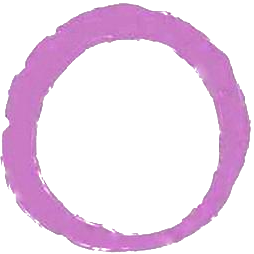3 year old Seaberry with fruit
Vegetative Propagation of Seaberry,
Hippophae rhamnoides
Buzz Ferver
www.perferctcircle.farm
2/4/18, edited 9/20/20
Seaberry is a great plant with many human benefits and uses. It is a nitrogen fixer, and has been used for erosion control and soil building. See great article here
It was recently reported to me that the Bullocks Permaculture Homestead planted seaberry in the same hole with chestnut trees 20 years ago, and these two plants are still in association together. I have not seen the pics.
While it is a vigorous growing plant that tends to sucker from the roots, it has not achieved a definitive reputation as “invasive”, a word I hate to use. However, it is very vigorous in the right conditions, and many people are worried.
In my observations seaberry requires nearly full sun to prosper, and will decline in the shade rapidly. I have not observed it growing from seed at my location.
Seaberry seems to have a reputation for being a difficult plant to propagate vegetatively. I have not experienced this other than in regards to the timing of taking hardwood cuttings as outlined below. If you are a reasonably experienced propagator, seaberry should not be too challenging. I typically get a 75-85% take or higher. Nearly 100% take from good wood is often the case.
Fall Hardwood Cuttings
Seaberry has a timing issue around the collection time of dormant hardwood cuttings that may be quite specific-Hardwood cuttings taken at the onset of dormancy until the winter solstice root readily in the greenhouse at temps of 55F(13C) and higher. Hardwood cuttings made after the solstice decline in take rapidly, down to as low as 15% by mid-February. Make and stick your dormant seaberry hardwood cuttings before Jan 1.
Cuttings should be made from vigorously produced one year wood, the thicker the better. A 3/8”(10mm) or bigger cutting will root and grow more rapidly then a 1/4”(7mm) cutting. Cuttings smaller then 3/16”( 5cm) are harder to get rooted and to grow. A cutting length of 4”(10cm) will work, but an 8”(20cm) cutting works far better. Cuttings should be stuck into rooting media one half their length, a minimum of 3”(7cm). Remove all leaves that will be below grade before sticking cuttings in the rooting media.
Wounding the end of the cutting seems to help in rooting, but is not essential. Wound the woody cuttings by scraping the bark down to the green tissue beneath, length of wound is about 1”(2-3cm)
I do use rooting hormone -.1-.3% IBA all seem to yield similar results. I have rooted dormant seaberry without hormone successfully.
I have rooted cuttings from 2 year old wood. They root fairly well, but are slower to make plants.
It is suggested by Dirr in The Reference Manual for Woody Plant Propagation that dormant hardwood cuttings of seaberry taken in spring just before bud break will also root well. I tried this in spring 2020 with mixed results, some cultivars rotted well, others not at all.
Summer Cuttings Semi-hardwood
Seaberry summer softwood cuttings are also fairly easy to propagate. Cuttings should be made from vigorously growing wood, the thicker the better. Wood should be beginning to harden off. In Central Vermont this is the very last part of July, first part of August. Cuttings should remain upright after being taken and stuck in well moistened media. Cuttings that wilt severely (bend over to touch the ground and do not straighten up) are still too green, wait for another few days. The window for softwood cuttings is only two-four weeks for cuttings that will remain outside (in zone 4) , as you run out of warm weather to make roots if you cut too late in August. This does not apply to greenhouse cuttings which can be stuck much later due to the higher heat.
Cutting sizes for summer cuttings should be the same as above, but no shorter than 6”(15cm). Length of cutting stuck into the rooting media is half the cutting length.
For nursery production I use a 12''(30cm) ,+ or -, softwood cutting stuck directly into a TP38 tree pot
You can root directly into this tree pot and than grow for one year, or longer. This is a great labor savings.
Spring Cuttings
I tried a batch of spring cuttings in 2020. They did OK in general, but with several of the cultivars I got zero take.. I will stick with late summer and fall cuttings
Root Cuttings
Because seaberry suckers readily, it is very likely they will propagate easily from root cuttings. This is also suggested by Dirr. I have not tried this method as of yet. My past experience with other species root cuttings is they are slower in general than woody cuttings.
Rooting Media
In stark contrast to almost universal recommendations to the opposite, I root everything in non-sterile, soil-less compost based media made from compost, peat and amendments. I have used Vermont Compost Company's Fort V potting soil for 14 years, almost exclusively.
My results were not nearly as positive using perlite or other sterile media.
Male Plants
Male plants are harder to root, and success is variably dependent on individual male plant selections. When you find a male that roots readily,, make sure to mark it well.

